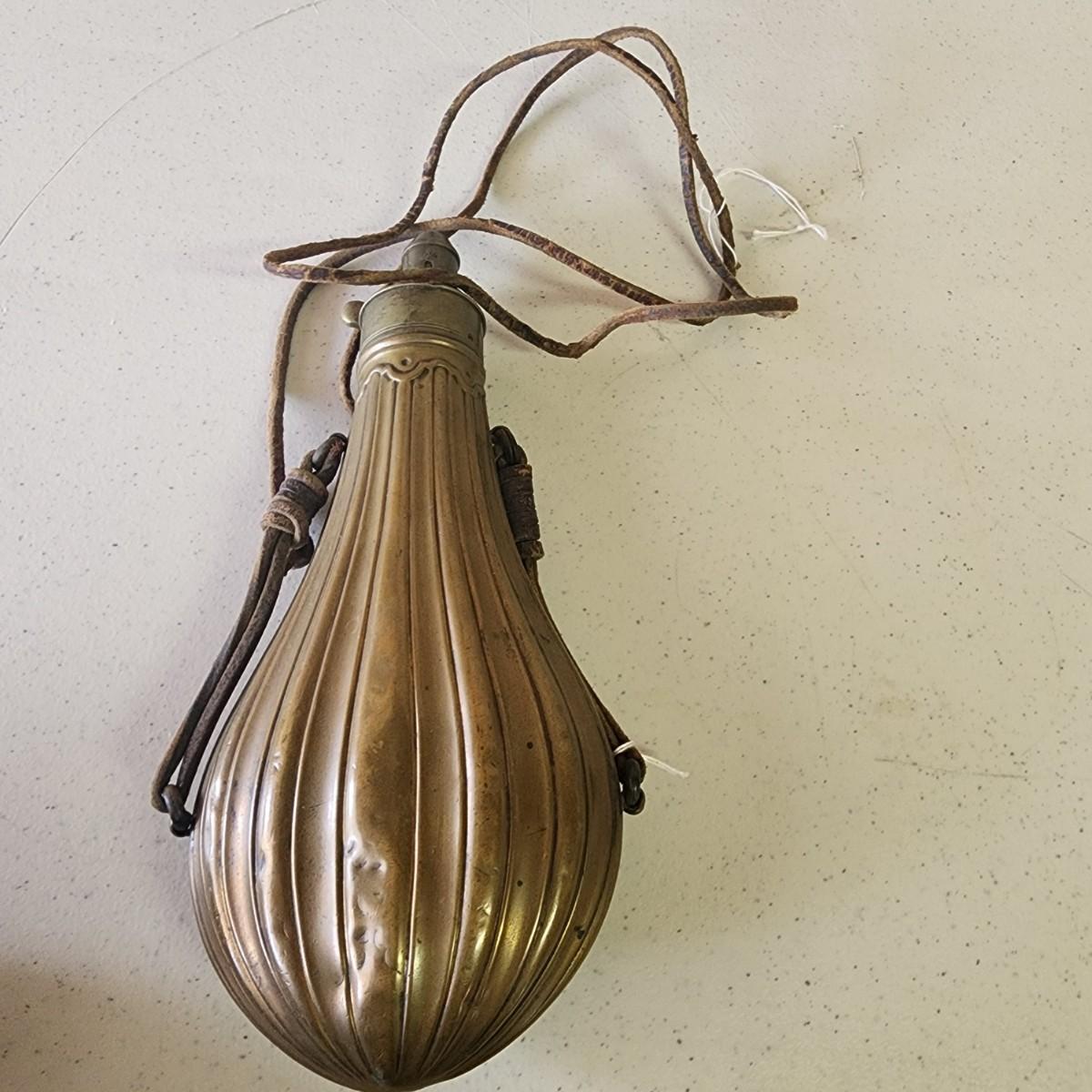Alright folks, gather 'round! Let's talk about something that goes BOOM... sort of! We're diving headfirst into the exciting world of Civil War powder flasks. Imagine holding a piece of history, a little time capsule that once held the very stuff that fueled the firearms of yesteryear.
But hold your horses! Before you start envisioning yourself as Indiana Jones discovering a lost treasure, we need to make sure that shiny "antique" you found isn't just a modern-day replica trying to pull a fast one. Don't worry; we'll turn you into a powder flask detective in no time!
First Impressions: The Look and Feel
Think about what life was like back in the 1860s. Things weren't exactly factory-perfect, were they? Authentic flasks often show subtle imperfections – a slightly uneven seam, a tiny dent here or there. Think of it as character, a story etched into the metal. Avoid flasks that look too shiny, too perfect, almost like they just rolled off a time machine from Pottery Barn.
Feel the weight! Real powder flasks usually have a substantial heft. They weren’t made of flimsy aluminum foil. If it feels like it could float away in a gentle breeze, it might be a red flag.
Material Matters: What's It Made Of?
Many original Civil War flasks were made of copper or brass, sometimes with a lacquered finish. Others were made of leather-covered tin, giving them a distinctive look and feel. Some even used horn! So, do your research on the specific flask style you're interested in.
Modern replicas often use cheaper materials, like pot metal or flimsy plastic components disguised as something else. Take a close look; does the material seem authentic to the period, or does it scream "Made in China" even without a stamp?
The Nitty-Gritty: Details, Details, Details!
This is where your inner Sherlock Holmes truly shines! Examine the spout, the charger (the part that measures the powder), and the seams. Are they well-made, functional, and reasonably consistent with the period?
Look for signs of wear appropriate for its supposed age. Does it look like it has been well-used and cared for, or does it look like someone took sandpaper to it yesterday? Real age comes with real patina. Check the seams, are they brazed or soldered? Brazing was much more common during the period.
Study the maker's marks and any other markings. Are they clear, legible, and consistent with known manufacturers of the time? Be wary of markings that seem too crisp or too perfect; they might be a giveaway that it is not authentic.
The Smell Test: A Whiff of History?
Okay, this one is a bit quirky, but bear with me! Old metal and leather can develop a distinctive odor over time. It's not always pleasant (think musty attic), but it can be a clue.
Don't expect it to smell like gunpowder, though! That would be a serious safety hazard. We're talking about a subtle, earthy scent that comes from years of being stored away.
When in Doubt, Ask an Expert!
If you're still unsure after all this sleuthing, don't be afraid to consult an expert. There are collectors, dealers, and historians who specialize in Civil War artifacts. They can offer invaluable insights and help you determine the authenticity of your find.
Think of it as investing in peace of mind. A professional appraisal can save you from making a costly mistake. Plus, you'll learn a ton in the process!
So there you have it! With a little knowledge, a keen eye, and maybe a magnifying glass, you can become a powder flask pro. Happy hunting, and remember: always handle antique firearms accessories with care and respect. After all, you are touching history!
"The past is never dead. It's not even past." - William Faulkner (and a good motto for antique hunting!)


























